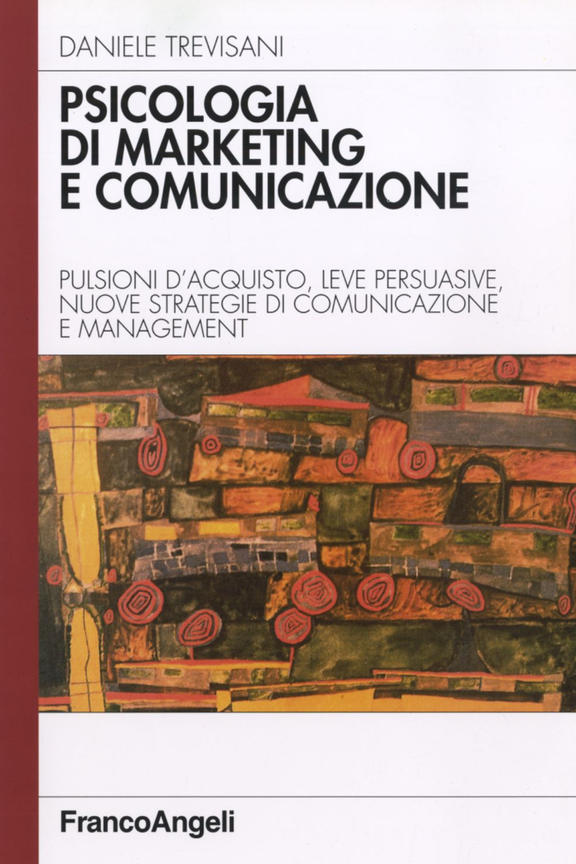© Article translated from the book “ PSICOLOGIA DI MARKETING E COMUNICAZIONE. Pulsioni d’acquisto, leve persuasive, nuove strategie di comunicazione e management” copyright Dr. Daniele Trevisani Intercultural Negotiation Training and Coaching, published with the author’s permission. The Book’s rights are on sale and are available. If you are interested in publishing the book in English, or any other language, or seek Intercultural Negotiation Training, Coaching, Mentoring and Consulting, please feel free to contact Daniele Trevisani
Mental Balance in Purchasing: a New Customer-Centered Theory
Leon Festinger’s research has amply demonstrated the human need to avoid dissonance between one’s thoughts and actions, to the point that – in the face of the perception of an internal dissonance – the individual will modify his own opinions or actions to seek an internal balance. The problem of cognitive dissonance in marketing emerges in all its strength when the company fails to develop a coherent image between product quality, packaging, brand quality, sales force behavior, advertising materials and the internet, and any other communicative element of contact with the customer. Along the product evaluation process, the consumer or buyer may encounter different sources of dissonance.
Here are some examples:
- Internal dissonance of the product. The internal dissonance of the product emerges when different characteristics of the same go in directions that are not compatible with each other. For example, a poorly made seam in a formal dress (the same defect wouldn’t bother much in a garden dress). Or again, a country of origin of the product that is not among those appreciated by the consumer, despite being the perfect product from a technical point of view. Or again, in tourism marketing, the dissonance between the marble entrance of a hotel and the dirty and smelly rear, or the difficult choice between two products, both of which are incomplete.
- Product-seller dissonance. It occurs in situations where the product is liked, but there are doubts or poor satisfaction with the point of sale, or with the seller himself. I may be extremely attracted to a computer brand, but absolutely dislike the arrogant behavior of the local exclusive vendor.
- Product-image dissonance. I may like the technical characteristics of the product, but not the image associated with it. I may like the Lacoste product (in terms of quality and finish), but not the typical subject that Lacoste wears. I can love Portofino’s visual landscape, but not its visitors and its image of an elite place.
The analysis of the drives aims to understand which decision-making levers are triggered, leading a subject to separate from one value (his own money, his own time, and other values that are important in themselves) in exchange for something else (a performance, a well, a service, a favor). The analysis of the mental mechanisms that occur during a choice must lead us to reflect on which areas of human thought are involved in the decision.
Qualitative studies conducted by the author have shown that some valuation phenomena that have a general value occur during a purchase deed. That is, they can be applied to any buying and selling phenomenon. The studies are in progress, but here we can anticipate some results, which constitute a fixed point of this volume and of the next one under development, dedicated to frontal communication.
The first results of our research highlight two phenomena:
- the real purchase cost is very different from the monetary cost: the purchase cost is a sum of economic costs and psychological costs – related to the purchase – that the customer anticipates, perceives, fears or foresees.
- The perceived return resulting from the purchase is very different from the goods or property actually acquired: also in this case there are (with greater or lesser force) flows of psychological value that influence the perception of value of the purchased good or service. Therefore, even the total return of the purchase is a sum: material goods (or services) plus psychological returns of various kinds. We can therefore speak of a Total Cost of Separation (CTS: sum of the money or goods sold + psychological costs related to the purchase) and a Total Purchase Return (RT, sum of physical and service returns + psychological returns).
In general, for a purchase to take place, the total cost of separation (separation from money + psychological costs) must be less than the total return of the operation (physical or service return + psychological return).

© Article translated from the book “ PSICOLOGIA DI MARKETING E COMUNICAZIONE. Pulsioni d’acquisto, leve persuasive, nuove strategie di comunicazione e management” copyright Dr. Daniele Trevisani Intercultural Negotiation Training and Coaching, published with the author’s permission. The Book’s rights are on sale and are available. If you are interested in publishing the book in English, or any other language, or seek Intercultural Negotiation Training, Coaching, Mentoring and Consulting, please feel free to contact Daniele Trevisani .
- Website of Studio Trevisani Academy For Business Training, Coaching e Mentoring, in Italian
- Website Dr. Daniele Trevisani in Italian
- Dr. Daniele Trevisani – Website in English
- Comunicazioneaziendale.it Italian website on Business Communication
- Medialab Research Cultural Association for Communication Research
- Dr. Daniele Trevisani Linkedin Profile in English
- Facebook Channel
- YouTube Channel

